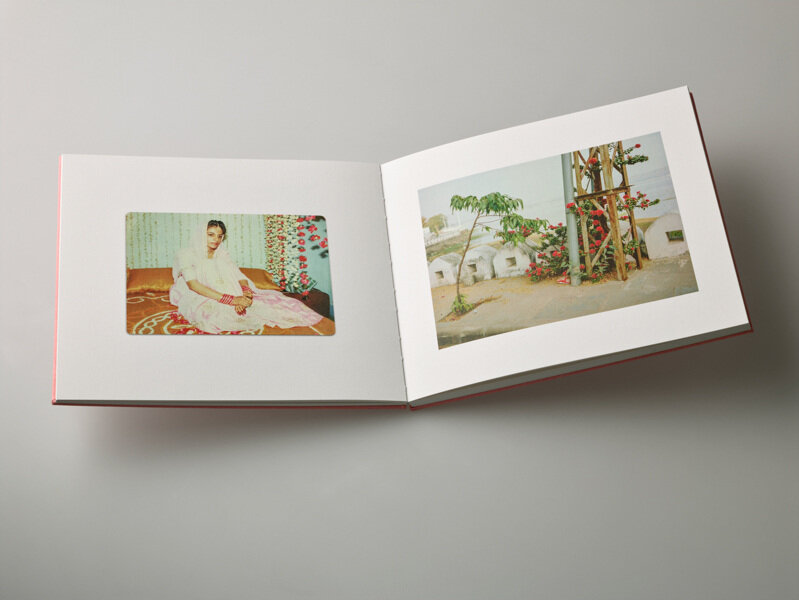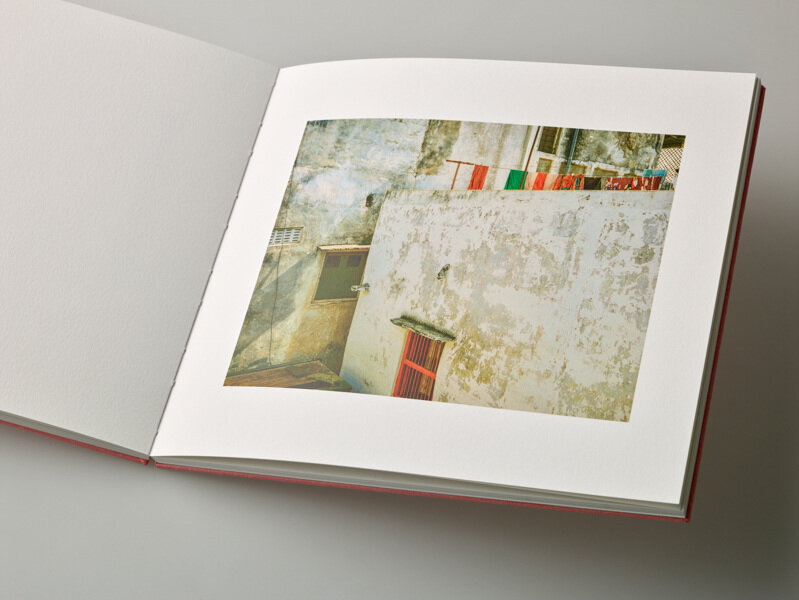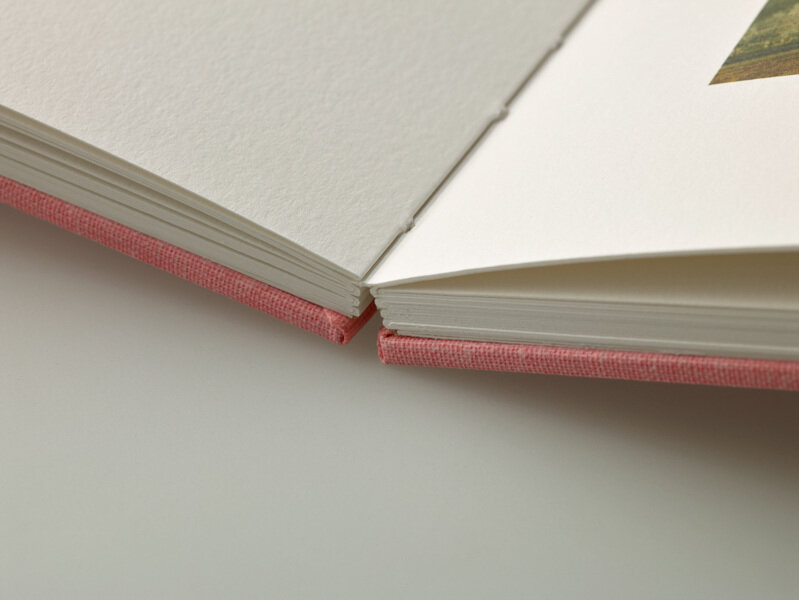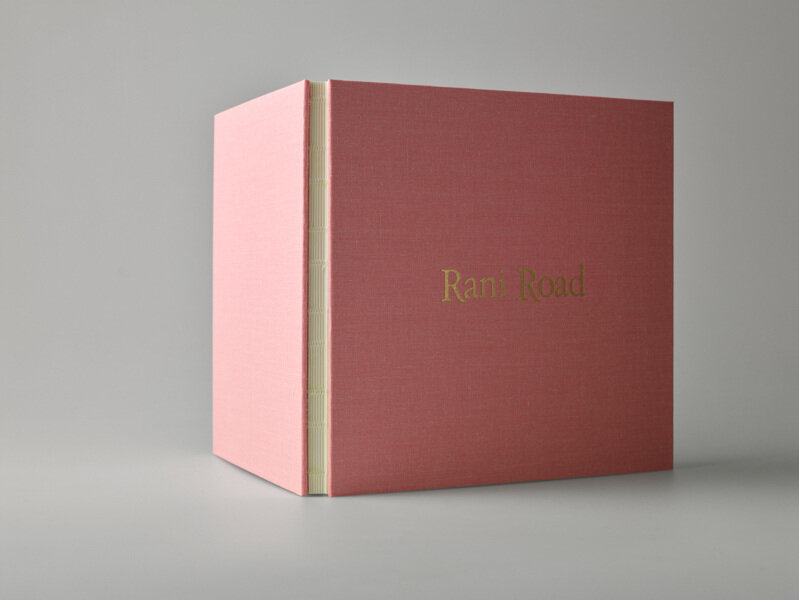Book Review: “Rani Road” by Saleem Ahmed
By Rafael Soldi | March 17, 2020
Self-published
Printed by Brilliant Graphics: April 2017 | 64 pages | 8.75 x 8 in.
I’ve been carrying Saleem Ahmed’s book, Rani Road, with me for a few weeks: leafing through the pictures, sitting with his words, and getting a sense for the feel of it. Its seductive pink and gold cover felt as if I was carrying a wrapped present. Today this book actually felt like a gift: it offered a needed escape from the stressful and isolating news filtering through social media. The peaceful world of Rani Road afforded respite in the midst of chaos.
The book opens with quiet views of domestic spaces and empty streets looking over the water—blooming trees and flora in a gentle tug-of-war with the architecture. I can almost hear birds chirping. These are the streets of Udaipur, India, where Ahmed’s parents are from, and Rani Road borders one of the various lakes in Udaipur.
The pages interlace photographs made by Ahmed with old family photos.
“I took my own images during morning walks to Rani Road and the surrounding neighborhoods. I sometimes asked my mom to take me to the places she used to live or spend time during her childhood. I also asked my aunts, uncles, and cousins if I could scan their family albums. My time in Udaipur was all about gathering and creating, knowing that I would have to sort through everything when I got back to the United States.”
Initially, Rani Road was supposed to be a project about Ahmed’s mother, but “it evolved into a story about various female characters, including my grandmothers, aunts, and cousins. These women are the backbone of my community and I wanted to share my appreciation for them. Rani translates to ‘princess’.”
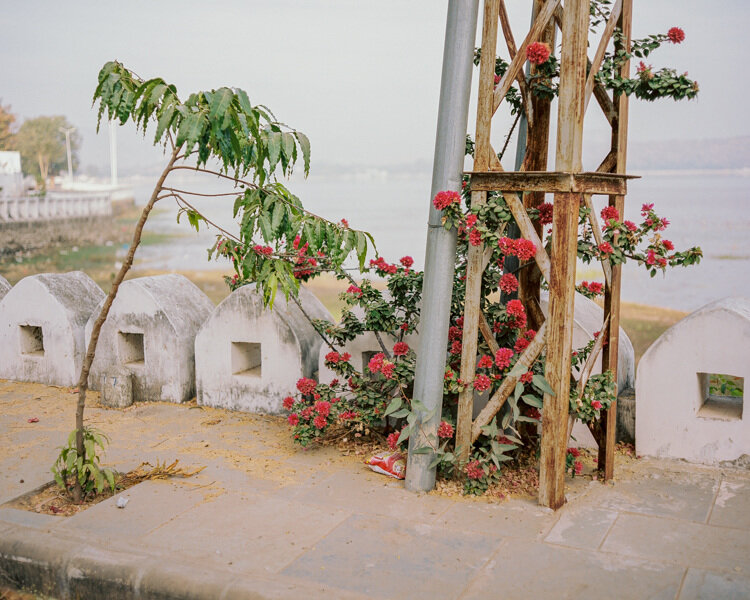



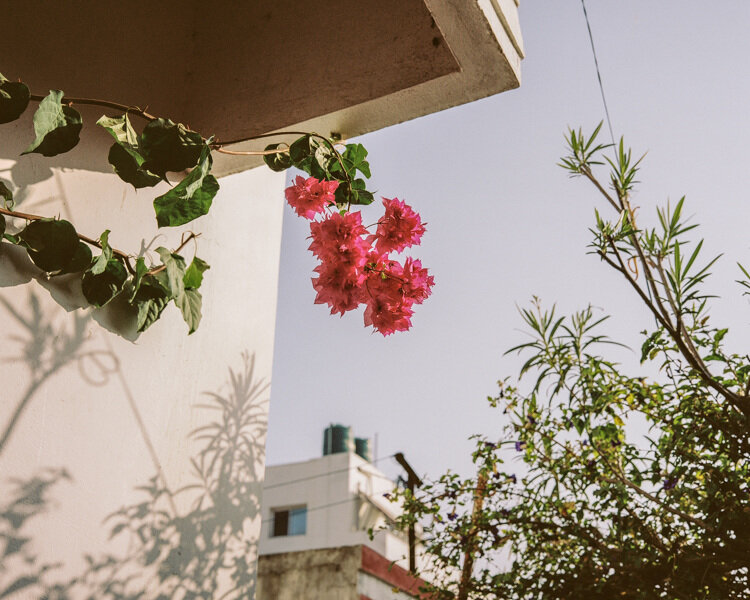


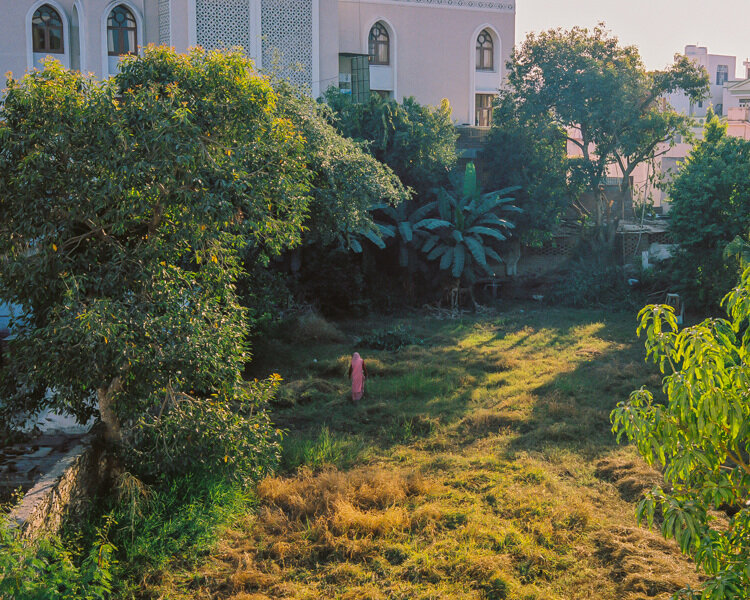
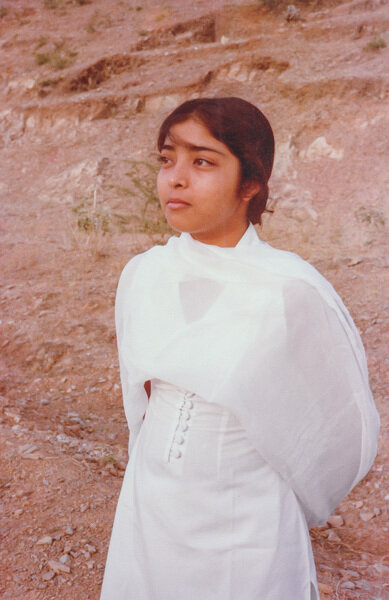
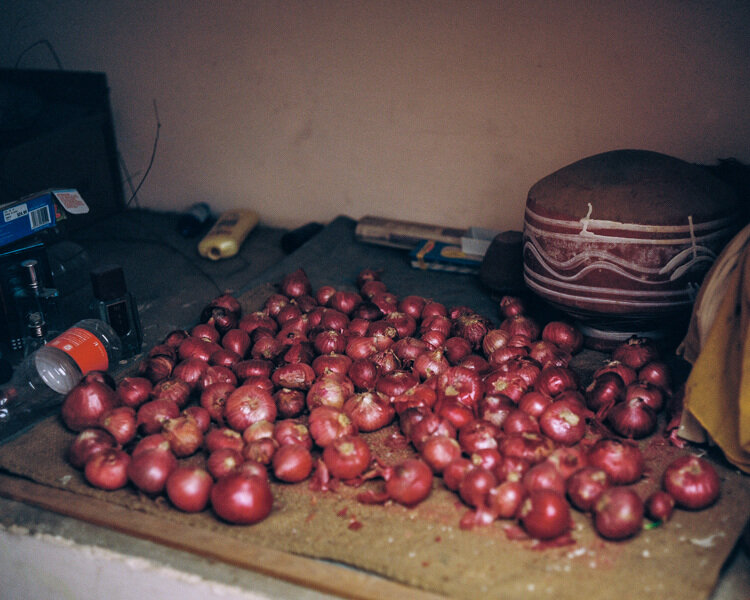

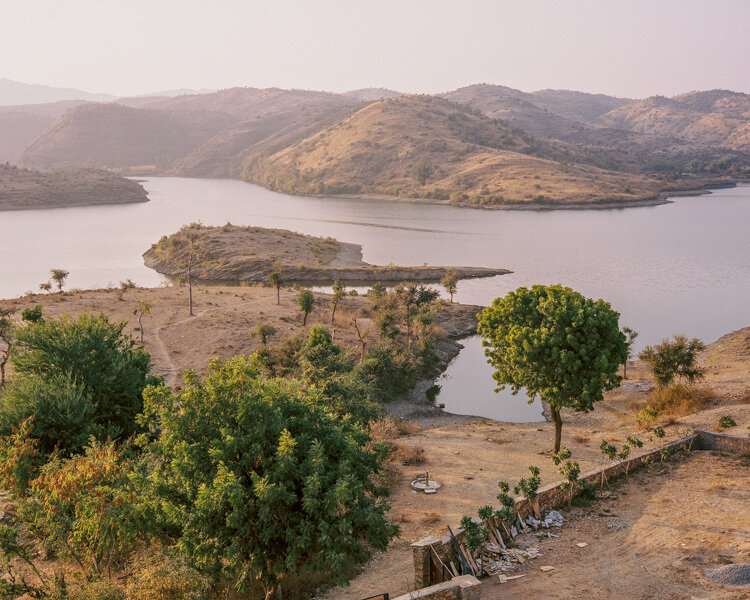

Ahmed makes it easy escape, to roam the streets of this place and to feel one with its peace. The short essay at the back of the book follows the morning routine of an unidentified woman—presumably a family member—in a cinematic way. Much like the way Ahmed photographs, his words invite us into a simple life keenly seen: the rocking of an old metal swing, her reflection on a metal bowl, an old car parked under a tree, or a scarf picked up by the wind. Ahmed writes:
“…Within seconds she escaped into a daydream. She found herself gazing across the waters of Fateh Sagar from Rani Road. It was her favorite view of the lake; a place she could come to disappear, even if it was only in her thoughts…”
This sense of abandon, of dreaming, is poignant during a global crisis forcing all citizens to isolate. In a recent interview Ahmed said, “I love to get lost—to take different routes to different places because it leads to something I wasn’t expecting to see.” It’s this freedom that I crave in this moment and in a strange way this book provides it. The pace of the edit has a wandering nature, as if we’re on a walk but stopping to observe a beauty from a time gone by.
Rani Road opens with a yellowing family snapshot of a woman in a headscarf followed by a photograph by Ahmed of an empty metal bowl. Both of these echo in different ways the gorgeous and timeless gold foil on the book’s cover. Later on, toward the book’s end, we find the same metal bowl but filled with milk, which brings a satisfactory resolve to an otherwise non-linear sequence. In Ahmed’s afterword, the female protagonist wakes up before sunrise and awaits the milkman, who, on the last line of the text, unceremoniously ladles milk into the empty bowl. She then makes her morning chai.
The strategy of pairing these roaming photographs with the stillness of a story that celebrates the intimate happenings of an unremarkable morning, helps bring immediacy and focus to every picture. He writes, “the text was a way for me to figure out what I wanted to say with the images. It helped form a sort of structure. Once the writing was completed, creating an edit and sequence was much easier.”
Borrowing from the language of magical realism, this book presents everyday moments that feel at once ordinary and dream-like. Ahmed finds magic in the strange readymades that are born out of the nature + human + time equation: rags caught in the branches, morning light crawling through an unseen window, pink blooms growing out of concrete, a potted plant wrapped in cloth as if it were chilly. I notice lovely flashes of pink thoughtfully sprinkled throughout the pages, which carry the eye from the book’s front to its back cover, both wrapped in a most perfect powder pink.
Handling the book is a gratifying experience; it holds together tightly and lays flat with a lovely exposed smythe sewn spine. The work is printed beautifully on a heavyweight, warm cotton paper. Rani Road was self-published by Saleem Ahmed in an edition of 150.
All images courtesy of Saleem Ahmed.
